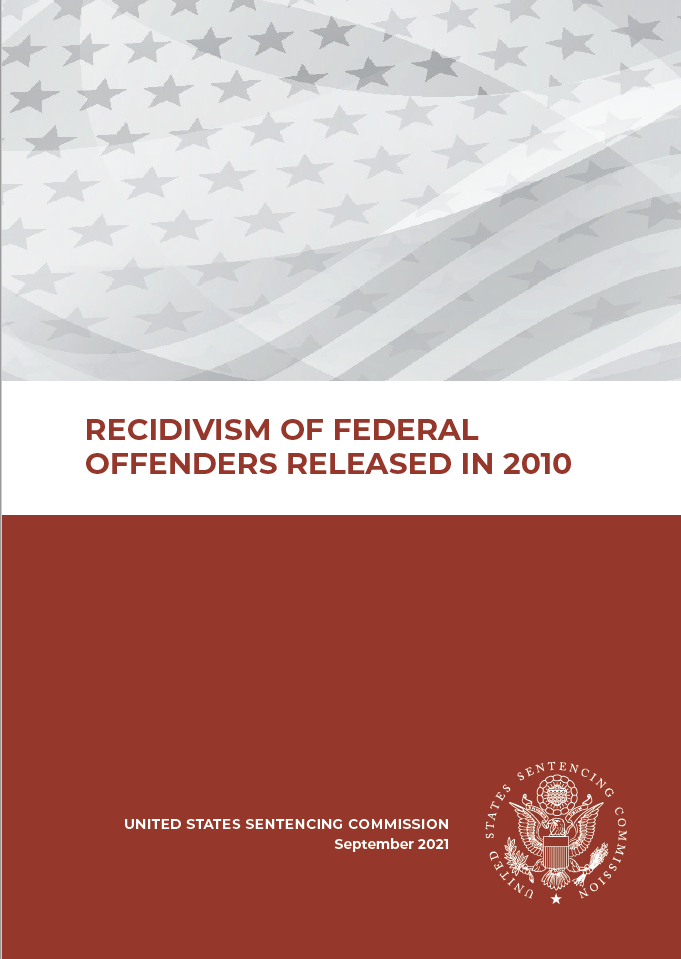Overview

The final study group of 32,135 offenders satisfied the following criteria:
- United States citizens;
- Re-entered the community during 2010 after discharging their sentence of incarceration or by commencing a term of probation in 2010;
- Not reported dead, escaped, or detained;
- Have valid FBI numbers that could be located in criminal history repositories (in at least one state, the District of Columbia, or federal records).
Key Findings
-
The recidivism rate remained unchanged for federal offenders released in 2010 compared to offenders released in 2005 despite two intervening major developments in the federal criminal justice system: the Supreme Court’s decision in Booker and increased use of evidence-based practices in federal supervision.
- Over an eight-year follow-up period, nearly one-half (49.3%) of federal offenders released in 2010 were rearrested, the same rate for offenders released in 2005 (49.3%).
- Other recidivism patterns also were consistent for the two offender cohorts.
-
For offenders who were rearrested, the median time to arrest was 19 months. The largest proportion (18.2%) of offenders were rearrested for the first time during the first year following release. In each subsequent year, fewer offenders were rearrested for the first time than in previous years. Most offenders in the study were rearrested prior to the end of supervision terms. Of those offenders who were sentenced to a term of supervision and rearrested, 76.3 percent were rearrested earlier than the expiration of their originally imposed supervision term
- Assault was the most common (20.7%) offense at rearrest. The second most common offense was drug trafficking (11.3%), followed by: larceny (8.7%), probation, parole, and supervision violations (8.1%), and administration of justice offenses (7.5%).
-
Combined, violent offenses comprised approximately one-third of rearrests; 31.4 percent of offenders were rearrested for assault (20.7%), robbery (4.5%), murder (2.3%), other violent offense (2.3%), or sexual assault (1.6%).
-
Similar to findings in its previous studies, the Commission found age and Criminal History Category (CHC) were strongly associated with rearrests.
- Offenders in CHC I (the least serious CHC) had the lowest rearrest rates (30.2%) and offenders in CHC VI (the most serious CHC) had the highest rearrest rates (76.2%).
- In addition, nearly three-quarters (72.5%) of offenders younger than age 21 upon release were rearrested during the study period compared to 15.9 percent of offenders aged 60 and older.
-
Combined, the impact of CHC and age on recidivism was even stronger. During the eight-year follow-up period, 100 percent of offenders who were younger than 21 at the time of release and in CHC IV, V, and VI (the most serious CHCs) were rearrested. In contrast, only 9.4 percent of offenders in CHC I (the least serious CHC) who were aged 60 and older at release were rearrested.
- Offenders sentenced for firearms and robbery offenses had the highest rearrest rates during the eight-year follow-up period, with 70.6 percent and 63.2 percent, respectively. In contrast, offenders sentenced for fraud, theft, or embezzlement had the lowest rearrest rate (35.5%).

